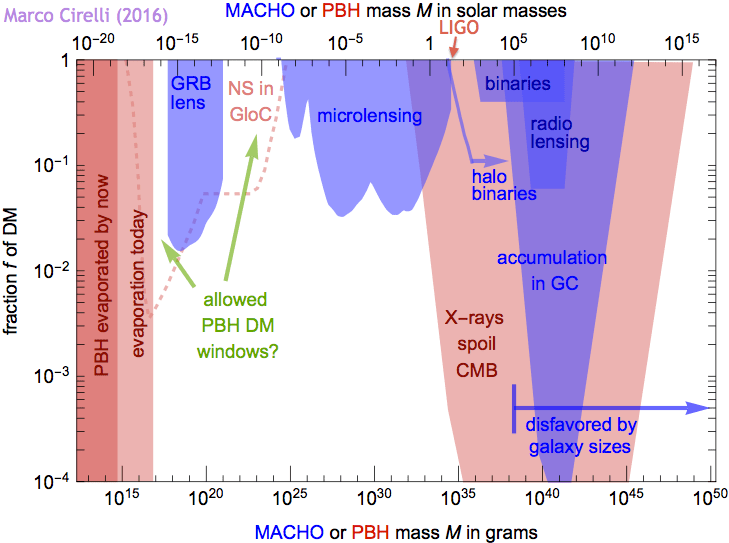Astronomers have observed three types of black holes in the Universe. Stellar-mass black holes formed from the collapse of a massive star, intermediate mass black holes found in some star clusters, and supermassive black holes that lurk in the centers of galaxies. But there is a fourth type that remains hypothetical an unobserved. Known as primordial black holes, they are thought to have formed from tiny fluctuations in the hot and dense early cosmos. Since they wouldn't have formed from stars or mergers, they could have a much smaller mass. And with small masses, primordial black holes would be tiny. Their event horizons would be smaller than an apple, perhaps as small as a grain of sand. You can see why they would be hard to find.
If they exist, these dustmote singularities would be a perfect candidate for dark matter. This is not a new idea. Observations of dark matter have ruled out stellar-mass black holes and even planet-mass ones, but they haven't quite ruled out primordial black holes. So they are a possible explanation for dark matter, but how would we prove it? A new study on the arXiv tries to find out.
Observational constraints on primordial black holes over various mass ranges. Credit: M. Cirelli (2016)
The authors begin by noting that if dark matter really is composed of primordial black holes, then they must be clustered around regular matter in the way dark matter does. There must be a halo of tiny black holes surrounding the Milky Way, and there must be primordial black holes scattered throughout our solar system. The gravitational pull of these tiny black holes should therefore affect the motion of planets, asteroids, and comets in detectable ways. Previous searches turned up nothing, but the authors wanted to know whether the effect would be significant enough to observe with our current technology.
So they ran several computer simulations to calculate the size of the effect. Since the gravitational pull of a single black hole would be tiny, the team looked at how nearby encounters would shift the orbits of solar system bodies. We describe orbital motion by ephemerides tables, so they used simulations to determine how the ephemerides would change over time. What they found was that even if we took a decade's worth of ephemerides observations, the effect of primordial black holes would be an order of magnitude smaller than the limits of observation. In other words, even if primordial black holes exist their effect is way too tiny to observe in our solar system.
While the result is a bit disappointing, it does contradict a few studies that argue current observations rule out primordial black holes as dark matter. Though they are an unlikely solution to this cosmic mystery, they are still in the game.
Reference: Thoss, Valentin, and Andreas Burkert. " Primordial Black Holes in the Solar System." *arXiv preprint* arXiv:2409.04518 (2024).
 Universe Today
Universe Today

